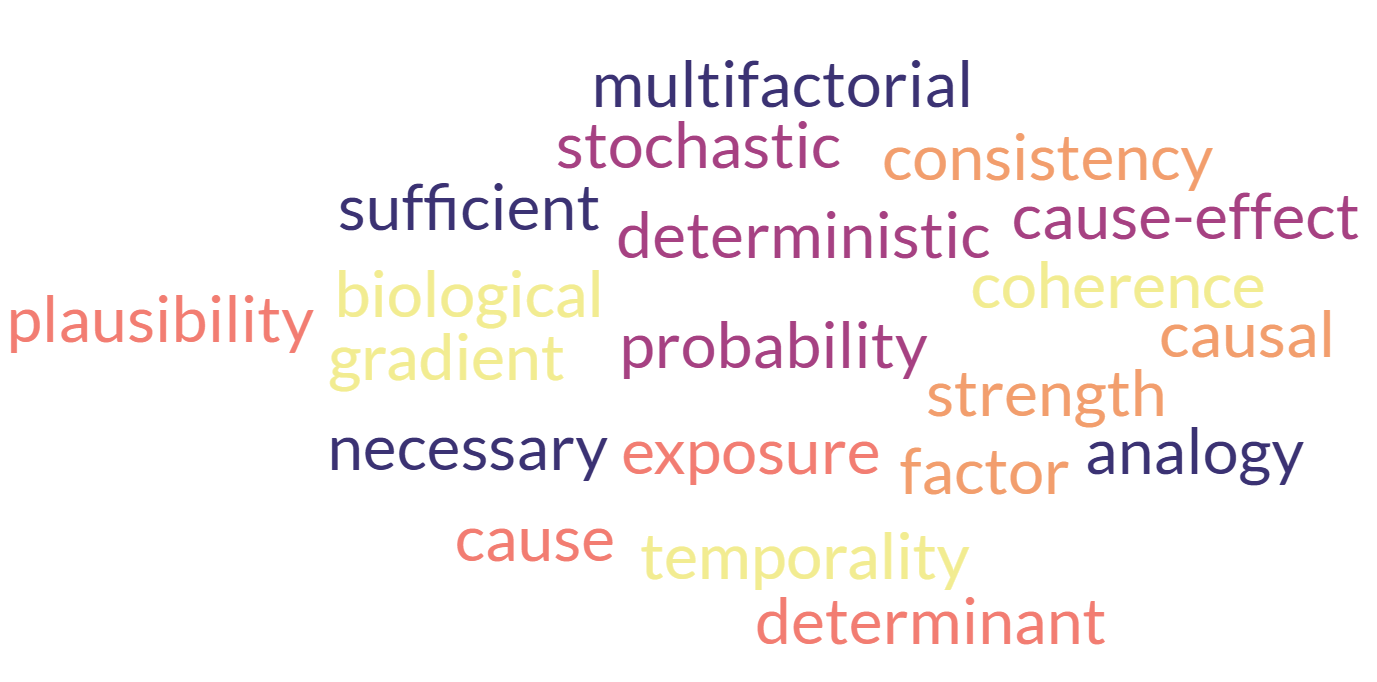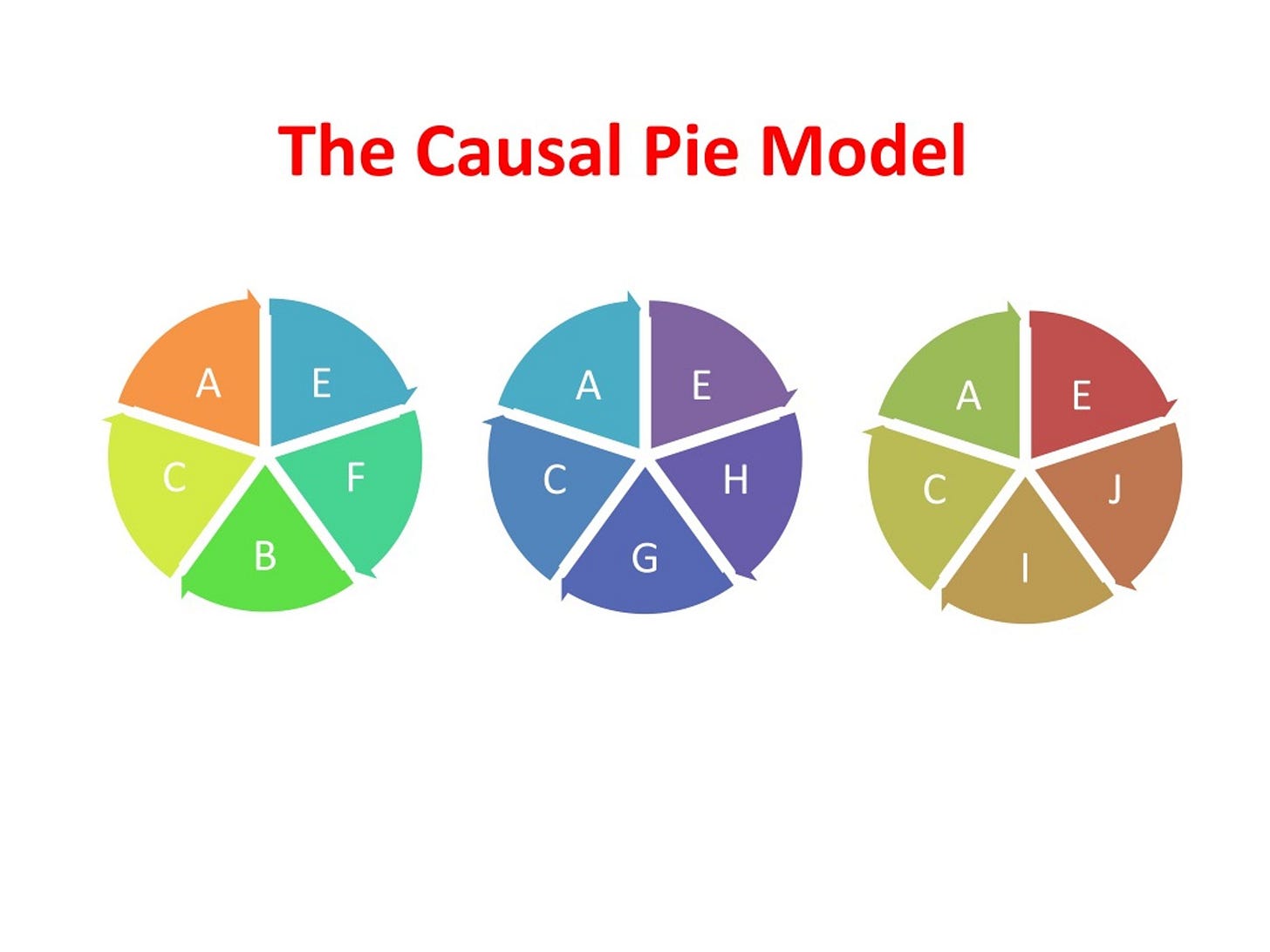A Lesson on Causality
A review on how causality works in epidemiology (real human being studies)
One bit of big recent news is Secretary Kennedy’s goal of finding the cause(s) of autism by September of this year. Since his nomination for HHS chair, there has been a lot of rumbling about his claims or what does or does not cause autism.
The problem here is that people in general do not understand causality. How many times have you heard “well, I took the COVID jab, and I was fine, so that means it doesn’t cause any adverse effects”? Ask those same people if every smoker they ever knew got lung cancer, or if they ever knew any non-smokers that got lung cancer. Suddenly their absolutist theory doesn’t work anymore.
In truth, causality in epidemiology is complex. I spend an entire 1.25 hour lecture on this in the classes I teach. It is one of the most important concepts in an epidemiology course. But you all don’t want to watch a hour-long lecture , so here I will point out some key points in causality theory and how to think about things.
1. Causality can be probabilistic / stochastic. Translation – not everyone that is exposed to a putatively causal factor will get the disease.
The classic example of this are the BRCA1/2 genes that cause breast cancer. Much less than 100% of the people that carry these genes get breast cancer. (This gene also causes ovarian cancer, but at an even lower probability.) Just because you are exposed to something that could cause disease, doesn’t mean you will get disease. Part of the issue here is that people don’t understand probability.
2. Sometimes there are multiple factors that combine to cause disease. In epidemiology, we often call this the causal pie model or multifactorial causality.
Hypothetically (not using this figure), maybe in one situation, a person might need factors A, B, C, and D to get disease. All of them. Another person might need A, F, G, and H. For another person, it might just be two factors, X and Y. Proving this is difficult obviously, but possible. So if two people have a common causal factor, they might not share the other factors that are also needed.
3. Analogy – has a similar relationship been seen before? Also Consistency – the relationship between the factor and disease is seen over and over.
Starting here to get into Hill’s criteria. Certainly with the example I gave in the very beginning, it something that people should not overlook. For example, I know multiple people with medically-verified adverse effects from vaccines. By medically-verified I mean doctors have said “this issue was caused by a vaccine”. You can’t ignore that. But if these don’t make it into the literature because The Science is biased, you have a problem.
4. Temporality – cause before effect
This one seems obvious, but I think people often overlook it. Sometimes this is hard to prove, but it is critical. Moreover, if you can demonstrate cause before effect, you shouldn’t disregard it as easily. Conversely, sometimes you cannot observe temporality. But if it is there, it is one of the strongest of Hill’s criteria.
5. Plausibility – does it make biological sense?
2 Peter 3:5 (KJV) talks about people who are “willingly ignorant”. When considering cause and effect, you have to think beyond the superficial. Remember, physicians used to recommend smoking. It wasn’t until there was a more critical look at the ingredients in cigarettes, and what those ingredients could do, that there was serious consideration of the plausibility of smoking causing lung disease.
6. Confounding – when something else you aren’t considering is the actual cause.
The classic example of this is a study done long ago that found an association between cancer and coffee drinking… until they realized that all of the coffee drinkers also smoked cigarettes. If the true causal factor co-occurs with something else that you are measuring, your study might be confounded.
In closing, I’ll give a related example that I am familiar with from genetic studies. If you’ll note, the article cited above says that autism can be caused by genetic factors. There are several chromosomal deletions that have been associated with autism, many of which are not inherited but are the result of DNA replication errors. It turns out that these same deletions also occur in children with other disorders other than autism. Now, there are people out there that deny that genetics cause autism. I’ve seen these chromosomal deletions, and they are big and likely damaging. But what caused that DNA replication error? And why do some kids get autism from that deletion and other kids get a different disorder? Could a smaller deletion in the same spot on the chromosome cause a milder disorder that no one has detected yet? These are examples why causality is complicated.




